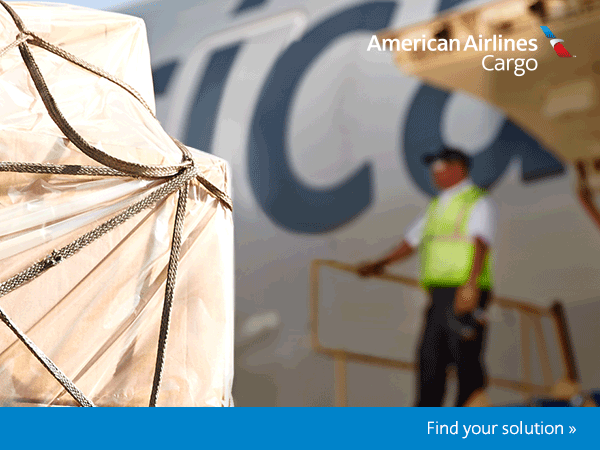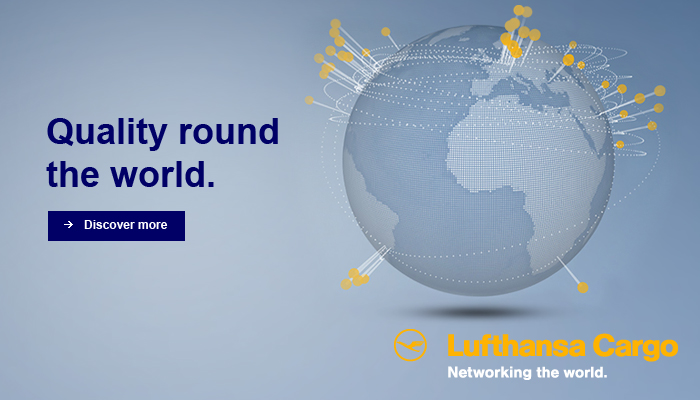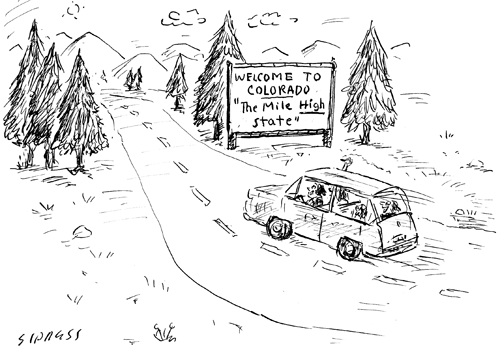
Here we
go again, with some story clippings that share unique thoughts from
the more than 150 exclusive and original feature-length articles created
exclusively for FlyingTypers’ readers
during the first half of 2014.
This multi-part summer reading series
continues through August, offering an almost instant replay look at
various topics you may have missed.
Our view is that we serve some pretty
smart, inventive, and engaging people in today’s air cargo business.
But read on, because the following may
contain some thoughts still useful as the rest of 2014 unfolds.
 FIATA
Outlines Modern Times—March
5, 2014
FIATA
Outlines Modern Times—March
5, 2014
 By
Rodolfo Sagel
By
Rodolfo Sagel
Chairman of the FIATA Airfreight Institute.
Shippers have been under pressure to cut distribution
costs.
However, airfreight remains indispensable
and is the best choice of transport for higher values and smaller quantities.
Sensitive cargo also prefers the air.
As the air cargo industry increases its
importance, so does the need for skilled freight forwarders, which are
able to cope with the high pressures of delivering goods in a customer
oriented or customized manner.
Freight forwarders thrive at skillfully
answering their clients’ needs and consistently delivering the
best combination of price and quality.
Since the 2008 financial crisis, the air cargo industry has been stagnant
and has experienced very little, if any growth. According to Air Cargo
Management Group (ACMG), air freight traffic declined about 1 percent
from 2010 to 2011, and annual growth averaged just 2.6 percent from
2001 through 2011, this was less than half the historic rate. Additionally,
major air cargo carriers saw a decrease in cargo revenues.
Delta Cargo experienced cargo revenue
decreases of 5 percent, which culminated into a 53 million dollar loss
compared to the previous year.
One of the stronger cargo handling airports
in the world, Singapore Changi Airport, handled 152,800 tons of airfreight
last September, which was a shocking decrease of 2.5 percent year over
year.
FIATA consists of small, medium, and big
freight forwarding companies in an increasingly competitive market.
Focusing on efficiency and win-win situations
for all involved business partners goes in line with reasonable investments
that both forwarders and airlines are called to make in the near future,
inter alia in the area of paperless trade.
The air cargo supply chain is today so
interconnected that no single party has the resources to expand autonomously.
This is just a fact of life and all must
learn how to live with it.
The importance of the air freight sector
is constantly monitored by FIATA. FIATA’s Air Freight Institute
(AFI) has developed on-going relationships with an exceptional number
of stakeholders in the air transport industry, from non-governmental
organizations, special interest groups, government bodies, regulators,
carriers, shippers, consignors, customs groups, legal specialists, cargo
risk underwriters, and technology providers.
It is a complex galaxy of interests where
FIATA sits perfectly at ease.
From this position it can greatly contribute
to the improvement of air cargo throughout the world and it will gladly
do so, provided the requests and measures make business sense and are
not expected to come from one side only.
Our constituents strongly believe
that the relationship between airlines and freight forwarders is crucial
for trade.
The efficient delivery of airfreight services
is unavailable without a well-functioning relationship between airlines
and freight forwarders.
This is however in need of profound changes,
which are felt by all FIATA members and a number of airlines.
This was the reason why FIATA and IATA
have started working on the air cargo modernization program.
After Tony Tyler’s words in Singapore:
We all recognize that we need a modernized
relationship that helps build trust and treats the Forwarder-Airline
relationship as a partnership of equals.
That will lead to the enhanced cooperation
that will help industry adapt to the momentous changes it faces.

 Butler’s
New American Way—March 11, 2014
Butler’s
New American Way—March 11, 2014
 “If
I had to articulate my ‘must achieve’ goal this year, it
would be leading a successful integration,” Jim Butler newly named
President of American Airlines Cargo told FlyingTypers.
“If
I had to articulate my ‘must achieve’ goal this year, it
would be leading a successful integration,” Jim Butler newly named
President of American Airlines Cargo told FlyingTypers.
“If I had to articulate my ‘must
achieve’ goal this year, it would be leading a successful integration.”
“It’s a big job to integrate
two airlines, and thankfully, we have the best in the business working
hard behind the scenes to make this as seamless as possible for our
customers.”
“While we continue to operate as
two separate airlines today, we’re moving forward with important
integration milestones, pushing us one step closer to operating under
a single air waybill.
“In January, I announced my leadership
team, and just this month, we’ll begin co-locating select cargo
facilities to prepare us for operating as one airline.”
“Post merger, American offers so
many incredible opportunities for our customers—an even larger
network and broader opportunities—and it allows us to bring together
what our customers love most about both airlines and teams at American
and US Airways.
“So, where do we start?
“I know we’ve said it before,
but it all starts with our customers.
“As we continue to build and shape
our new cargo organization, our customers remain our top priority.
“We’ve been doing this well
for quite a while. In fact, this year, we’re celebrating our 75th
cargo anniversary.
“So, what’s our secret?
“Our customer focus.
“We see ourselves as partners to
our customers, and our team works hard every day to provide creative
solutions to meet their needs.
“Collaboration is key here, and
that’s really the mantra for our new marketing campaign: ‘With
you all the way.’
“We stay well attuned to the needs
of our customers and work with them to be successful together.”
“One of the great things about
this merger is the strength of our combined network and the many new
opportunities it presents.
“With a Philadelphia hub, which
sits right in the heart of the U.S. pharmaceutical corridor, we’ll
now be able to offer our ExpediteTC customers even more options for
shipping their cold chain shipments. Right now, work is already underway
to create a new, dedicated pharma facility for this hub.
“We’re also continuing to
build our presence in Asia, a key component in our long-term network
strategy.
“On June 11, we’ll add daily
nonstop service between Dallas/Fort Worth (DFW) and Hong Kong (HKG),
as well as daily nonstop service between Dallas/Fort Worth (DFW) and
Shanghai (PVG).
“Looking at the full picture, our
expanding presence in Asia will soon connect 68 different cities across
Latin America creating hundreds of routes where shipments can start
and end their journeys between the two regions alone, not to mention
all of the U.S. domestic and Transatlantic locations where we can ship
our customers’ cargo"Jim Butler said.
Geoffrey









